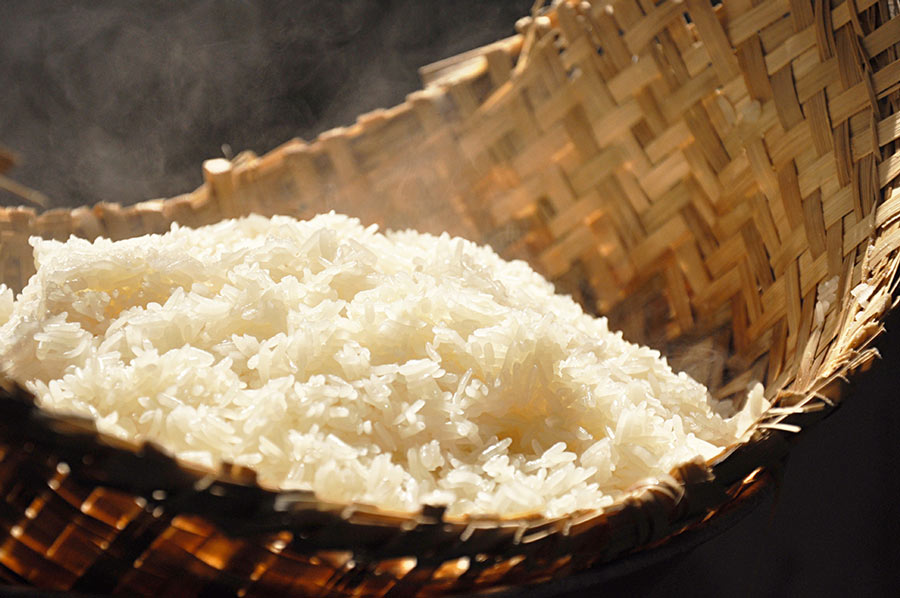Sticky Rice Mortar Used in Ancient Chinese Architecture
Ancient Chinese culture has made great contributions to humanity. The so-called Four Great Inventions of China – the compass, gunpowder, paper, and printing – are still being used extensively today. Now, it seems that sticky rice mortar may be one of the latest additions to the list of exceptional ancient Chinese inventions.
Strengthening Mortar with Sticky Rice
In 2010, an article, entitled “Study of Sticky Rice−Lime Mortar Technology for the Restoration of Historical Masonry Construction” was published by Accounts of Chemical Research. According to this article, the addition of sticky rice to lime mortar increased the strength of the latter as a binding material.
- 8 Ancient Chinese Inventions the West Had Not Imagined
- Rice Beer Was Consumed in Sacred Rituals 9,000 Years Ago in China
The earliest record of this technique, according to the researchers, can be found in an encyclopedia, the Tian Gong Kai Wu (meaning “The Exploitation of the Works of Nature), which was compiled by Song Yingqing during the Ming Dynasty (1368 to 1644 AD). Archaeological evidence, however, seems to show that the sticky rice-lime mortar technique was developed at a much earlier date, no later than the South-North Dynasty (386 to 589 AD) to be precise.

Mixing sticky rice. (Pornthiwa / Adobe Stock)
Using Sticky Rice Mortar for Architectural Restoration
Perhaps the best part of this study is its practical function. After all, the aim of the research was to investigate whether sticky rice-lime mortar could be used for the “restoration of historical masonry construction.” Anyone involved in restoring ancient buildings would know that getting the right materials for a building that is being restored is of utmost importance.
This is due to the fact that the bricks used in ancient buildings are softer than those used today. Consequently, pure mortar would have been too strong and may have ended up destroying the bricks. Hence, organic material would have been added to the mortar in order to soften it a little. By using ancient techniques in the restoration of ancient buildings, not only can historical accuracy be achieved, but the buildings themselves will also survive for much longer.

Horse Stopped Wall in Jiange County and the sampling location. (Luo, Y. B. & Zhang, Y. J. / CC BY 2.0)
Sticky Rice Mortar in the Horse Stopped Wall in Jiange
In 2013, another study on Sticky Rice-Lime Mortar was published in Heritage Science. This dealt with a specific site, and was entitled “Investigation of sticky-rice lime mortar of the Horse Stopped Wall in Jiange.” The researchers came to a similar conclusion as the earlier study – that sticky rice-lime mortar was a good natural binding material for construction.
Furthermore, it was found that the micro-structure of this binding material, which is formed due to the interaction of the sticky rice and the calcium hydroxide (slaked lime), enabled the mortar to resist damage from the natural environment for hundreds of years.

The Great Wall of China. (Rosana / Adobe Stock)
Orientalism in the Western Press
One of the most interesting things that I found while doing the research for this article was the way this piece of news was presented by some of the Western media to its readers. For instance, the (rather misleading) headline used by The Telegraph was “Great Wall of China's strength 'comes from sticky rice’.”
Perhaps, to a Western audience, the most iconic image of ancient China is the Great Wall. However, it may be pointed out that nowhere in the article is the Great Wall of China ever specifically mentioned. The “Ming dynasty sections of the Great Wall” in the news report probably refers to the Nanjing city wall of the Ming Dynasty that was mentioned by the researchers.
- An Ancient Rice Field and a Lost Palace: Archaeologists Get a Double Dose of Luck in China
- Repaired with Duct Tape and Bubble Gum? A Section of the Great Wall of China Collapses
I suppose, to some extent, this could be viewed as a form of Orientalism, a term used to describe the way in which Western academia views the East through a “racist” and “imperialist” lens. One could interpret this stereotyping of China as a relegation of ancient Chinese architectural achievements to just one monument.
To be fair, this misrepresentation is probably the exception, rather than the norm. Obviously, if the architecture of the USA was only represented by the Statue of Liberty, or that of England by Stonehenge, that wouldn’t do justice to either country either, would it?
Top image: The ancient Chinese made sticky rice mortar by using sticky rice for construction. Source: Atstock Productions / Adobe Stock
By Ḏḥwty
References
Luo, Y. & Zhang, Y. 2013. “Investigation of Sticky-rice Lime Mortar of the Horse Stopped Wall in Jiange” in Heritage Science. 1(26). Available at: http://www.heritagesciencejournal.com/content/1/1/26
Marshall, J. 8 June 2010. “Sticky rice made ancient mortar stronger” in NBC News. Available at: https://www.nbcnews.com/id/wbna37569779
Moore, M. 2010. “Great Wall of China's strength 'comes from sticky rice’” in The Telegraph. Available at: http://www.telegraph.co.uk/news/worldnews/asia/china/7785842/Great-Wall-of-Chinas-strength-comes-from-sticky-rice.html
Yang, F., Zhang, B. & Ma, Q. 2010. “Study of Sticky Rice−Lime Mortar Technology for the Restoration of Historical Masonry Construction” in Accounts of Chemical Research, 43(6), p. 936–944. Available at: http://pubs.acs.org/doi/full/10.1021/ar9001944


















Comments
Concrete and mortar act as skin, rebar acts like the bones in a foundation in modern times. This was an perfect cost effective way of using surplus rice and not having to get metal workers to make metal supports.. This is an impressive use of chemistry how the author pointed out the chemical mixture of the rice and lime..
Troy Mobley
Thanks! All fixed.
I think you mean ingenious not ingenuous.....